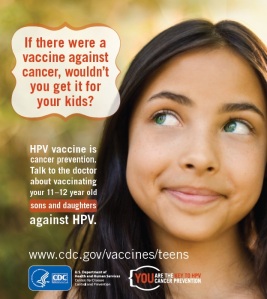The latest National Immunization Survey-Teen report was released on July 31, and we asked Lynn Trefren, RN, MSN, Immunization Branch Chief at the Colorado Department of Public Health and Environment to help explain the data and what this means for Colorado teens and their parents.
The 2014 teen national immunization survey (NIS – Teen) results were recently published. What does that mean?
Each year, the Centers for Disease Control and Prevention (CDC) does a survey of teens aged 13-17 years by getting immunization information from their parents and verifying it with their health care provider. They publish the data for all states as the NIS-Teen Survey.
How are Colorado teens doing according to the survey?
Colorado teens are doing better with some immunizations than others. In Colorado, 89.3% (±4.6) of Colorado teens aged 13-17 years have had the recommended dose of Tdap (tetanus, diphtheria and pertussis) vaccine. Colorado met the Healthy People 2020 goal of 80% for this vaccine. For Meningitis vaccine (MCV4), the rate is 76.7% (±6.4) and for the HPV (human papillomavirus vaccine) it varies for males and females. These vaccines are recommended at age 11-12, but not all teens are getting all three when they see their health care provider.
Where does Colorado need the most improvement in teen immunizations?
HPV vaccine is a cancer prevention vaccine recommended for all teens (males and females). In Colorado, only about 60% of girls and 44% of boys have received at least one dose. This leaves many teens unprotected, and is the immunization rate that could improve the most.
What should a parent do to make sure their teen is protected?
Check with your health care provider. At age 11-12, all children should receive one dose of Tdap, one dose of meningococcal vaccine, and three doses of HPV vaccine spaced over six months. If your child has not received all of these, make an appointment to get up to date.
Is there anything else to know about this survey? Are there limitations?
The NIS data has limitations, including the difficulty of reaching families by phone, and then obtaining provider immunization records for those families willing to answer the survey. Families without phones and those who are unwilling to respond to a national survey may have different immunization rates than those who respond, but there is no way to know for sure. Additionally, estimates stratified by state/local area and race/ethnicity might be unreliable because of small sample sizes.
To learn more about which vaccines teens need to stay healthy, visit:
Immunize for Good
The Colorado Department of Public Health and Environment – Immunizations
CDC: Preteen and Teen Vaccines

